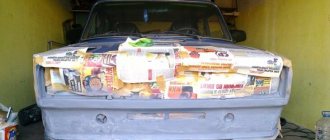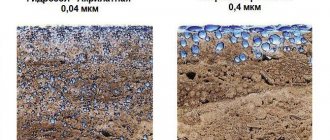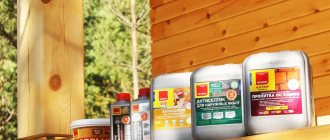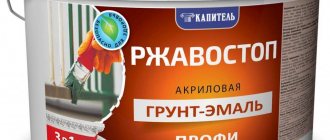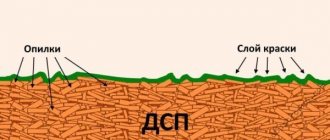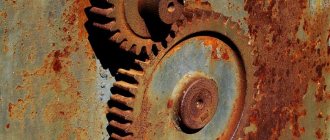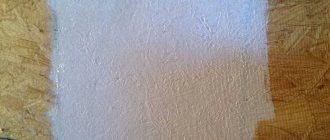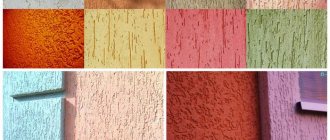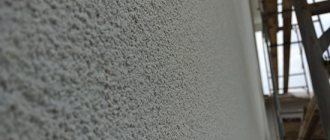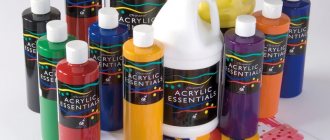Features of choice
First of all, anti-corrosion mixtures are selected based on the type and condition of the metal that needs to be treated. The main purpose of a primer when coating ferrous metals is to slow down corrosion. Iron, cast iron, black steel and alloys based on them used for outdoor work are very susceptible to corrosion due to interaction with a merciless environment. For these materials, if they have already begun to rust, a converter should be used as a priority. It will at least partially eliminate traces of corrosion. If the primer mixture is selected for external products made of non-ferrous metal or alloy, for example zinc, copper, brass, aluminum, then its primary function is to ensure maximum adhesion between the treated surface and other finishing material. For this purpose, you can choose compositions based on organic solvents, with a urethane base, and containing zinc. They can be used as a protective coating for galvanized iron or steel. Bronze, brass and copper are best protected with polyurethane or epoxy varnish. On sale you can find types of primers for metal that are applied to hide difficult to remove stains, for example, from grease, soot, etc. This step in the repair cannot be skipped if you do not want the stains to reappear over time or provoke peeling of the decorative finishing. After choosing a primer, you can begin to study the instructions for its external use.
IMPORTANT: 1. pay attention not only to the properties and types of primer, but also to the form of its release. To dilute powder bases and concentrates, it may be necessary to purchase a special solvent; 2. check the compatibility of the selected primer mixture with the planned decorative coating - they may be incompatible.
Types of primers
To maximize the prevention of corrosion, the primer should be selected taking into account its main characteristics, such as: the basis of the composition, adaptability to certain types of metals, feasibility of use in external finishing work. You will have to choose among very different soil mixtures.
Phosphating
Suitable for all metals, but used primarily for coating steel surfaces. The composition is based on a mixture of solvent and phosphoric acid, which has high heat resistance (withstands up to 220°C). Paint adheres well to such a primer; it is preferable to apply it to coatings that are not affected by corrosion. When finishing external structures, it does not always provide the expected protection.
Acrylic
Compositions characterized by safety, absence of unpleasant odor and high drying speed. Acrylic-based primer mixtures allow you to hide minor defects on external metal surfaces, create a durable anti-corrosion coating, and ensure good adhesion. Water-based acrylic primer can be used on various types of metals that are not damaged by rust.
Passivating
Used for aluminum metal structures and products made from other ferrous metals. The main components are chromic acid salts (it is important that their concentration is high). They prevent the interaction of external structures with the environment, which eliminates the development of corrosion processes. The group of these primer mixtures includes alkyd, polyurethane and epoxy.
Tread
They are used for various metals and have enviable anti-corrosion properties. The main components of the mixtures: aluminum, magnesium or zinc powders (their content can reach 90%). They create a strong outer protective film, preventing rust from spreading. Even if cracks appear on the structure, the zinc components of the soil will protect it from corrosion.
Inhibiting (two-component formulations)
Can be used for all types of metals. After application, the mixtures are converted into enamel primer, excellent for its high anti-corrosion properties. They are water- and oil-soluble. They are not suitable for processing external metal structures that may be subject to heating in the future, since the protective film will emit an unpleasant odor.
Insulating
Mainly used for ferrous metals, but can also be used for non-ferrous metals. The main components of the mixtures are neutral pigments and lead white. They are not capable of providing a long-lasting effect, so they are hardly suitable for exterior finishing work. They also cannot be painted.
Transformative
Designed for external metal structures damaged by corrosion. The composition is based on surfactants. They convert existing rust into an anti-corrosion film. To ensure complete protection of the metal, it is necessary to combine this type of primer with a passivating mixture.
Advantages and disadvantages
Metal processing with a properly selected composition has a number of advantages:
- Saves paint and varnish material;
- Improves the quality of adhesion of paint and metal surfaces;
- Creates a protective layer against corrosion;
- Acrylic primers for metal are absolutely safe for humans and can be used indoors;
- Epoxy primers for metal have high strength properties.
Professionals say that the minimal costs associated with applying primer can delay repair work for a long time.
Types of processing solutions
The most common primers for metal:
- Among the different types of solutions used for this purpose, the most popular are alkyd ones, made on an alkyd varnish base with the addition of additives and stabilizers. This primer can be gray or brown. Quick-drying and very durable, they protect metal structures inside and out and are a good base for most topcoats.
- Phosphoric acid-based compounds are best used on substrates already affected by rust. They successfully fight it, protecting and restoring the surface, and significantly improve adhesion. The use of phosphorous soils significantly strengthens the destroyed base, stopping the oxidative processes occurring on it.
- Acrylic water-dispersion primer helps to level surfaces and increase adhesion. Quick-drying, it is safe for the human body and suitable for indoor work. Suitable for iron and non-ferrous alloys. Some types of acrylic compositions are not suitable for painting, for example, acidic compositions - the paint will not lie smoothly on them and will smudge. They are applied when the product is going to be left without decorative finishing.
- Epoxy primers have a high level of protection against moisture and other atmospheric influences. They are used not only for the protection of metal structures, but also for cars.
- Passivating compounds suppress corrosion processes and are indispensable for external work. They protect metal products well from negative influences. Their chemical formula works even when water penetrates through the protective film to the surface.
In addition, the purchased metal primer must meet the following factors:
- what metals are processed: ferrous or non-ferrous;
- conditions for the product: indoors or outdoors, loads on it;
- what final coating will be applied.
Having determined the necessary requirements, you can decide which composition is best suited to ensure that the metal primer has maximum protection.
It is worth paying attention to the release form and taking into account the tool that will be used to prime the surface.
- When using a spray gun, you should use liquid mixtures. Powder foundations or concentrates work well. They can be diluted to the required consistency with water or solvent. The use of this device is advisable when applying protection to metal structures and large sheets of iron. It must be remembered that water-dispersion solutions are quick-drying, and the application of the next layer must begin as soon as the one already applied has dried.
- Any primer is suitable for the roller. It ensures even and economical distribution of material.
- It is not economical to use a brush as an independent tool when priming metal - the consumption of primer is too high. It is good for working in hard-to-reach places, working on the main area with other tools.
- Solutions are available in aerosol cans. Working with them is convenient, but they have small capacity. To process large buildings or sheet iron, you will have to purchase them in large quantities.
When purchasing a mixture, you must carefully read the instructions and take into account:
- Consumption per 1 m2. There should be no interruption in applying the primer; you must immediately purchase the required amount.
- If the drug is toxic, then you need to stock up on protective items: a respirator, goggles, gloves.
Characteristics of primer mixture for metal
The soil mixture is used both in large-scale production and at home. This is a solution used to combat corrosion phenomena and level out minor errors on the product. The film formed by the primer is resistant to temperature changes and high humidity.
There are several types of primers and each of them has its own consumption parameters per unit surface area.
Advantages and disadvantages
The properties of an acid primer are considered its advantages. These include:
- high degree of wear resistance;
- enormous resistance to moisture and salt compounds;
- reliable protection of the material from external negative influences;
- excellent heat resistance – at high temperatures the qualities of substances do not change;
- fast hardening – within 5 minutes;
- resistance to the destructive aggressive influence of petroleum products, such as engine oils and gasoline.
In addition to numerous advantages, there are also disadvantages of the material. For example, it burns well. In addition, it is toxic, and when working with it you must work carefully and avoid contact with the skin and eyes.
When working with acid primer, protective equipment is required Source www.landspeedauto.com
Features of choosing soil for a fence
The primer will not only ensure an even and economical application of the decorative paint coating on the base, but also, if chosen correctly, will ensure a long service life of the fence and its presentable appearance. The choice of primer mixture depends on the characteristics of the material and its structure:
- Fence made of corrugated board. Beautiful, durable, easy to care for. In this case, only the pillars and load-bearing parts require additional processing. The profiled sheets themselves are coated with polymer decorative paint, which guarantees a long service life. After a few years, the coating may lose its original appearance, then the corrugated sheeting can be painted.
- A fence made using metal sheets. In this case, the pillars and surfaces are completely primed before painting. It is imperative to use mixtures with an anti-corrosion coating - they will provide reliable protection against corrosion and rust. By clicking on the link you can learn about the features of painting metal fences.
- Wooden picket fence is a natural, durable and beautiful material, but it requires special protection. Wood surfaces are primed with compounds containing antiseptics that protect against moisture, mildew and mold. Additionally, you can apply fire retardant impregnation, ensuring fireproof properties.
- Concrete fences are one of the most durable and popular. They are quickly erected, the material is inexpensive, but the porous structure of concrete easily absorbs water, is destroyed by atmospheric agents, and the gray color looks boring. Correctly executed priming and subsequent painting of a concrete fence can extend its life and turn it into a decorative element. Mineral-based soils are best suited for concrete - they fill the porous structure of the base well, significantly reduce the ability to absorb moisture, and ensure uniform application of the finishing coating.
- Brick fences, due to the variety of structure and color, are beautiful in themselves. They do not require additional decorative painting. But brick has strong moisture-absorbing properties and can quickly collapse under the influence of precipitation. For its long service life, it is better to use transparent primers that do not require subsequent application of paint.
Fence posts can be wooden or metal. For wooden posts, the same soil is used as for the main part of the fence, while metal posts require additional anti-corrosion protection.
For mixed surfaces, you can use universal compounds suitable for different types of material. Before processing, metal poles must be coated with an additional anti-corrosion coating to protect against rust.
What kind of soil mixture is needed?
There are many types of metal alloys. For maximum effect when processing them, you need to choose your own mixture.
- For ferrous materials, such as cast iron, some alloys based on iron and steel, compounds are needed that slow down the corrosion process. After all, such materials are highly susceptible to this effect. In addition, primers provide better adhesion during final painting.
- For non-ferrous materials, such as aluminum, copper, brass, zinc, a primer is necessary only to ensure high-quality adhesion of the coating to the base. These same types of mixed primers are used for processing galvanized iron and steel.
- For galvanized ones, compositions based on organic solvents are well suited; they have also worked well when processing bases made of non-ferrous alloys.
- Black, already bearing traces of rust and corrosion, must be treated with a rust converter, which, through a chemical reaction, turns it into a durable film that can partially restore the damaged coating. Working with this composition does not require thorough pre-cleaning before application - it is enough to simply remove all surface contaminants.
- A special group includes special anti-stain building mixtures for surfaces that do not absorb moisture. They block various contaminants (soot, grease and others) when there is no way to clean them. If this is not done, then in the near future the stains will “appear” after painting.
A primer for metal used for external work must be selected in accordance with the climatic conditions of the region, and for internal work, it must take into account the operating conditions and the level of toxicity, especially when working in residential premises.
The best primer manufacturers
One can hardly argue with the fact that the primer from a large, renowned manufacturer is of high quality. Buying a composition from a little-known company is always a risk: maybe you will be lucky and the material will meet your expectations, or maybe it will not have the declared properties or, even worse, it will ruin the surface. If you don’t want to risk the quality of the repair, it’s better to go straight to the store shelves with products from well-known primer manufacturers:
- Ceresit is a leader in the production of building mixtures; it has existed for more than 100 years and always relies on advanced technologies, quality control and expansion of the range. Due to the fact that today the company's factories are located in Russia, the cost of products has been reduced without loss of quality. The range includes a primer and a deep penetration primer-concentrate, a primer for absorbent mineral substrates, a primer for decorative plaster and a non-contact primer for treating smooth substrates;
- Knauf is a German company that has existed since the 30s and has been represented on the domestic market since 1993. They pay great attention to innovation, continuous improvement and implementation of comprehensive solutions for repair work. The range includes deep penetration primers, universal compounds for absorbent substrates, primers for cement plaster;
- Tikkurila is a Finnish company that has been in business since 1862. Factories are located in 7 countries around the world; they produce paints and other finishing and building materials. Primers are represented by acrylic compounds, universal, moisture-proofing and adhesive compounds;
- Caparol is a brand known throughout the world. The company's history began back in 1885 in Germany, and today its products are used in hundreds of countries. It produces primers for interior and exterior use, incl. frost-resistant and antiseptic compounds;
- Weber is a company that is now part of the Saint-Gobain group and produces building mixtures under the Vetonit brand. The assortment includes primers for exterior and interior use; if necessary, they can be tinted;
- IVSIL is a domestic company operating since 1997, has constantly developed and today has grown into a large manufacturer of building mixtures. Produces a universal primer and a deep penetration primer;
- "Prospectors" is a domestic company founded in 1992. At first, only putties were produced here, then they began to establish the production of other mortars and mixtures, improved recipes, purchased raw materials from leading manufacturers, introduced innovations, and now it is one of the largest Russian manufacturers of primers. The range includes universal compositions, primers for highly absorbent surfaces, and concrete-contact primers.
What is the best primer for metal? Popular manufacturers
There is no clear answer to the question of which primer is best for metal. Because, firstly, primers for metal have different purposes. Secondly, preferences vary from person to person. The best primer is the one that meets the desired requirements better than all others.
Tikkurila OTEX
SPECIAL METAL Primer
NOVAX Anticor “3 in 1” glossy
GF – 021
PF – 021
Nerzhamet
PRODECOR
Spray KUDO
The production of primers that protect metal surfaces is constantly developing, both abroad and within the country.
Domestic manufacturers are constantly improving, using both foreign experience and their own unique developments. And as this process intensifies, buyers are increasingly choosing domestic goods. Table 2. Popular primers for metal from leading manufacturers
| Soil name | Brand and manufacturers | Type | Average price in rubles per kg |
| Tikkurila OTEX | Tikkurila | Alkyd | 794 |
| SPECIAL METAL Primer | Hammerite | Transformative | 1650 |
| GF – 021 | TEX, LAKRA | Insulating | 120 – 129 |
| PF – 021 | SpetsEmal LLC, etc. | Alkyd | 84 |
| Nerzhamet | "KrasCo" | Alkyd-urethane “3 in 1” | 320 – 360 |
| PRODECOR | "Russian Paints" | Alkyd | 211 — 307 |
| Spray KUDO | "Russian technical aerosols" | Alkyd | 300 |
| NOVAX Anticor “3 in 1” glossy | GOODHIM | Alkyd | 334 |
It is worth noting that reviews of the presented products are approximately equally positive, regardless of whether it is a foreign or domestic brand. At the same time, the prices offered by domestic manufacturers are much more pleasant.
Options for primer mixtures for metal
There are several common processing solutions that help facilitate final processing of the product and improve its performance:
- Alkyd primers are a very common option and are used most often. It consists of an alkyd composition in the base, with the use of various stabilizing substances and additives. The color of the coating is gray or brown. It is highly durable and dries quickly. Also contains: red lead, whitewash and other components. Compatible with almost any type of final coating.
- Products consisting mostly of orthophosphoric acid. It is used for surface types that are already slightly affected by corrosion. The solution helps restore the material and free it from rust. Phosphorus primers stop all oxidative processes and, as a result, strengthen the product. When using such products, it is imperative to remove rust from the surface being treated.
- Acrylic, water-dispersed options are used indoors, increase adhesion, and level the surface. This composition dries quickly and is suitable for coating iron surfaces and alloys of non-ferrous metals.
- Inhibiting primer. This composition does not form a general film over the product, but penetrates directly into the surface at the molecular level. As a result, some properties of the material change, it becomes denser and harder. When processed, they combine the properties of the primer mixture itself and the enameled surface. Every day such coatings for various metal surfaces are becoming more and more in demand.
- Protective. This product contains magnesium and zinc. The higher the content of powders in this mixture, the higher quality it is considered. Particularly popular are compounds that contain red lead. Thanks to these components, the metal surface hardens and even the smallest scratches do not form on it. Ideal for those structures and products that have frequent contact with fresh and sea water.
- Converter. A variant of a mixture that is mixed with a corrosive coating. As a result, the structure of these stains becomes more porous and can be easily removed from the metal surface. Therefore, at the beginning of work on such material, it is not necessary to clean off rusty areas from the surface. Therefore, transformative compounds are an option for the lazy.
- Insulating mixtures. In this version, the base is a neutral pigment. But the primer itself has a short shelf life.
Each subtype of soil mixture has its own characteristics, which should be clarified when selecting. It must be suitable for the type of metal that is supposed to be processed.
The optimal characteristics for a standard metal primer are:
- semi-gloss or matte type of film;
- the period during which the mixture dries should be no more than 12 hours;
- elasticity parameters of the finished film without taking into account bending - no more than 1;
- conditional viscosity parameters more than 45.
This primer will significantly increase the service life of the metal surface and paintwork.
Quick-drying primer for metal
There is an opinion that a quick-drying primer is any priming solution that dries quickly. In fact, this statement is only partially true.
A quick-drying primer designed for treating metal surfaces requires from 20 minutes to 12 hours to dry completely. Such mixtures are created on an alkyd basis and include organic solvents. It should be noted that the drying time of conventional alkyd solutions for priming and coloring compounds takes about 2-3 days.
The product is most often used in the following applications:
- Mechanical engineering;
- Shipbuilding;
- Construction;
- Manufacturing of railway and agricultural machinery.
Let's look at the main properties of a quick-drying mixture using the example of GF-021 soil from TEX:
- Corrosion protection. The anti-corrosion qualities of the composition create a film that prevents the occurrence of rust, which is the main feature of the primer;
- Good adhesion. Preliminary use of the composition before painting can significantly improve the adhesion of paintwork materials to the base;
- Weather resistant. For some phenomena the function is not long-term, for this reason the application of the paint and varnish material should not be seriously delayed;
- Chemical resistance. The coating withstands exposure to substances such as oil, salt, gasoline, etc.;
- Covering power. The composition ensures uniform application of color to the working surface;
- Versatility. The quick-drying primer is suitable for both outdoor work and indoor painting. It can be used on surfaces made of metal, wood, concrete;
- Strong smell. The mixture has a pungent odor, which is caused by the organic solvents included in the composition. Due to this feature, it is necessary to use personal protective equipment when working.
Rules for priming metal for painting
When priming metal structures, a number of rules and recommendations must be followed.
Calculation of material consumption
The required amount of materials is usually indicated on the packaging. Specific parameters are influenced by the composition, temperature and humidity, and characteristics of the surface being treated.
Surface preparation and preparation of working solution
At the surface preparation stage, it is necessary to clean it. To do this, dust particles and contaminants are removed from the metal. You also need to get rid of rust-damaged areas. This makes it possible to apply primer and paint more evenly.
Applying primer
Before using the soil, you must read the instructions. Application may require a roller, brush or spray. Layers need to be made as thin as possible. It is better to increase their number. The primer must be completely dry before applying the finish. If required, the coating can be made rough. To do this, it is recommended to use sandpaper.
Layer drying time
The following factors influence the drying time of the primer:
- Surface quality. On dry and porous surfaces, the material dries much faster. To speed up the process, you can degrease the soil before using it.
- Temperature and humidity. The optimal parameters include +15-20 degrees and 60-80%. Before applying primer, the room must be ventilated. After using the substance, this should not be done, as the surface may become cracked.
- Layer thickness. The more layers are applied, the longer the primer takes to dry.
- Composition of the mixture. Materials that contain solid components or easily volatile solvents dry much faster.
Alkyd types of primer are considered the best option for treating metal surfaces. They take 10-12 hours to dry.
What is the difference between acid primer and epoxy primer?
Epoxy primer is a substance that includes epoxy resin, fillers, polymers, and some alcohol derivatives. The primer, after application, creates a film that does not allow oxygen to pass through. After hardening, the soil does not allow water to penetrate at all, since it does not form pores. Epoxy primer is available in a can or in jars.
Epoxy primer in cans Source sevparitet.ru
Epoxy Primer Differences
According to experts, epoxy primer should be applied directly to clean metal and then putty. This is especially important if the metal is being restored over several weeks, i.e. for a long time.
For example, if a car sits in a garage for a long time, then, since there is humidity in the room, the areas of the body that have been stripped down to metal will begin to oxidize. In this case, you can choose the option of puttying with an epoxy primer. Then the putty should be applied before the primer has completely hardened.
Differences in acid soil
When it comes to acidic soil, you can hear the following names: phosphating, etching, reactive. The primer in this embodiment is a compound of zinc and phosphoric acid. More precisely, it consists of:
- polyvinyl butyral, which is a synthetic material and serves to form good adhesion and film;
- zinc phosphates and chromates;
- water;
- phosphoric acid, which is an excellent rust converter;
- alcohol.
Composition of acidic soil Source strport.ru
The operating principle is approximately this: phosphoric acid acts on the metal and, at the same time, zinc is precipitated. The film is formed by polyvinyl butyral - the acrylic layer will already adhere tightly to it. After applying the primer to the metal surface, a thin coating is obtained. It is an anti-corrosion and adhesive layer. The primer does not completely destroy the rust that is already there, but it also does not allow it to spread.
Acid primer for cars is divided into four main types:
- One-component.
Acid primer is often sold in a can to make processing easier. You can also use a can of primer to spray it with a spray gun. The composition does not need to be prepared - it can be used immediately. When the soil hardens, you can begin to treat it with an acrylic composition to which a hardener has been added.
- Two-component.
If you purchase a two-component primer, you must prepare a primer. To do this, it is mixed with an activator, and the consistency can be different - hard or soft.
Two-component primer Source autocosmetica.by
See also: Catalog of companies that specialize in paints and varnishes.
Professionals prefer to work with a solid form, as it gives the strongest film. Depending on the recommendations in the instructions, the two-component composition can be applied in 1, 2, 3 layers. During treatment, maintain an interval of approximately 5 minutes between applications.
- Reactive.
This option is used for clean surfaces. The reactive substance forms a very small layer (8-13 microns). This is the base on which the following layers should be applied.
- Self-Etching primer.
This substance is a soil with the addition of zinc. Used to eliminate unevenness and improve the quality of adhesion. The substance acts on the metal, resulting in the creation of a layer of frozen polymer elements.
Self-Etching primer Source alicdn.com
You can choose a one- or two-component primer, but most craftsmen use a material that has two ingredients. The greatest wear resistance is achieved through filler primer - this is a necessary stage of coating.
